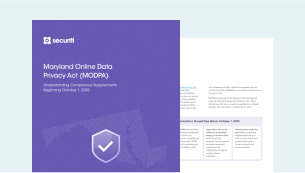Why is Unstructured Data Intelligence Important?
Data intelligence involves understanding, analyzing, and interpreting information about data to extract meaningful insights for effective utilization. It uncovers details about data origins, classification, quality, ownerships, changes, and interconnections. In other words, it tells you the who, what, when, where, and how of data.
Unstructured data intelligence is particularly important in the GenAI era, to safely harness this valuable enterprise resource. Unstructured data intelligence is critical to:
- Gain contextual insight into all your files, documents, and objects.
- Automate data discovery and classification.
- Govern and utilize all your proprietary enterprise data efficiently.
- Execute your GenAI projects with confidence.
- Enhance risk management and compliance.
The Challenges of Unstructured Data Intelligence
Unstructured data is characterized by no predefined data structure or organization. This is a huge obstacle to understanding and processing this data. When used for GenAI, a lack of intelligence on unstructured data can lead to poor or biased results, as well as data security, privacy, and compliance issues.
The road to Unstructured Data Intelligence is fraught with several challenges for enterprises, notably:
- Large Volumes: Enterprise data is exploding, with over 300 million terabytes of data generated every day in 2024. About 90% of this data is unstructured, putting substantial pressure on enterprises to interpret and manage it effectively.
- Diverse Formats: The lack of standardized formats affects data discovery and classification, making it difficult to use standard tools or universal frameworks.
- Varied Sources: Unstructured data can come from a wide variety of sources including news, chats, photos, research reports, podcasts, sensor data, and increasingly videos. Some of these sources may be unreliable, raising issues about the quality and value of the data.
- Resource-intensive Processing: The volume and variety of unstructured data demand robust infrastructure, significant computational power, and specialized tools processing.
- Real-time Processing: Gaining intelligence on unstructured data in real time for GenAI use cases requires high computational power and speed. It also demands advanced techniques like NLP and ML to build context and deliver deep, accurate, meaningful insights.
- Safeguarding Sensitive Information: Ensuring data privacy and security is critical, as unstructured data often contains hidden sensitive information. It is essential to balance effective processing and classification with stringent data protection measures.
Structured vs. Unstructured Data
| Structured Data |
Unstructured Data |
| Just 10% of enterprise data. |
Estimated to be 90% of enterprise data. |
| Stored in tables, rows and columns, making it easier to process and manage. |
Stored in its native format and requires advanced techniques to harness. |
| Wide variety of tools available for data intelligence. |
Sophisticated tools are essential for discovery, cataloging, and classification. |
How Securiti Delivers Unstructured Data Intelligence
Understanding unstructured data begins with identifying where it resides in the organizational silos. Then comes cataloging and classifying the uncovered data. With Securiti you can:
- Discover shadow and cloud-native unstructured data assets across different sources and environments.
- Catalog all files and objects that can be used in GenAI projects.
- Classify data based on its type, sensitivity, relevance, and other criteria.
- Document the data's characteristics, such as its metadata, ownership, and usage policies.
Securiti helps you gain contextual insights for unstructured data from all key perspectives, with a multidimensional Data Command Graph. A Data Command Graph is a Knowledge Graph that captures all key metadata and relationships between them.
- Data Systems
- Buckets / Folders
- Files / Objects / Documents
- Data Sensitivity
- Access & Entitlements
- Internal Policies & Controls
- Applicable Regulations
- GenAI Models / Pipelines
These insights serve as a baseline for the safe utilization of unstructured data for GenAI. You can uncover deep information for files of all types that include documents, images, audio, video, CLOBs, and many more. With Securiti Data Command Graph, you can get a complete view of:
- File categories based on content, for example, legal, finance, or HR
- Access and user entitlements
- Sensitive objects within a file
- Regulations applicable to file content
- File quality, such as freshness, relevance, or uniqueness
- Lineage of files and embeddings used in GenAI pipelines















































